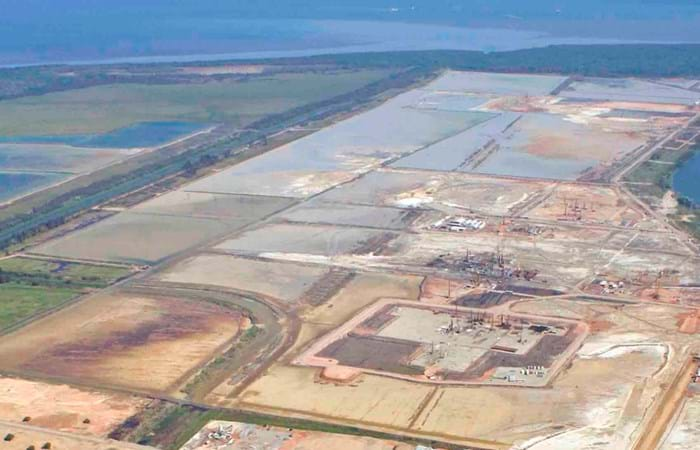Brazil has a wealth of iron ore reserves that can benefit the country’s economy and stimulate growth. To exploit these reserves German steel-maker ThyssenKrupp Steel and Brazilian mining company Companhia Vale do Rio Doce (CVRD) teamed up to construct a steel factory on the northern shore of Sepetiba Bay, an area of great natural beauty near Rio de Janeiro.
Brief
As a partner in a joint venture Boskalis was commissioned to dredge over 10 million cubic meters of material for the construction of a harbor basin and an access channel and to reclaim 200 hectares of swampland using hydraulic sandfill. The work also required Boskalis to dispose of 8 million cubic meters of clay and silt onshore and to de-water the reclamation and disposal areas.
Challenge
Boskalis approached the work with extreme care in order to meet all the environmental criteria:
- A cutter was equipped with an innovative ecological cutter head to remove previously contaminated soil with precision and ultra-low turbidity;
- Deep pits were dredged to contain the contaminated soil and sealed with a capping of clean soil;
- Selective dredging was used to reclaim the swamp area. This method took longer but ensured that disruption to the aquatic environment was kept to a minimum;
- Waste water was conducted through a series of specially-constructed silt deposit areas in order to mitigate turbidity levels;
- The reclaimed area was dewatered using 10 powerful water pumps with the water being fed through a pair of sinker lines and discharged four kilometers offshore.
Solution
- A cutter was equipped with an innovative ecological cutter head to remove previously contaminated soil with precision and ultra-low turbidity;
- Deep pits were dredged to contain the contaminated soil and sealed with a capping of clean soil;
- Selective dredging was used to reclaim the swamp area. This method took longer but ensured that disruption to the aquatic environment was kept to a minimum;
- Waste water was conducted through a series of specially-constructed silt deposit areas in order to mitigate turbidity levels;
- The reclaimed area was dewatered using 10 powerful water pumps with the water being fed through a pair of sinker lines and discharged four kilometers offshore.
